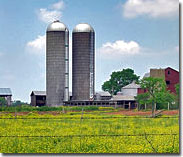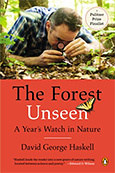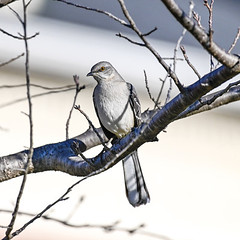Archive for the ‘Uncategorized’ Category
Prince William Freezes VRE Expansion In Its Tracks
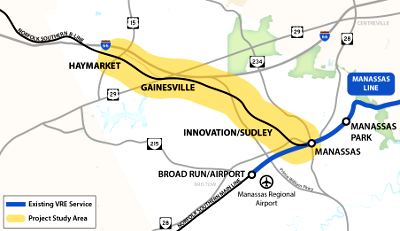 In December, the Virginia Railway Express (VRE) completed Phase 1 of the Gainesville-Haymarket Extension study.
In December, the Virginia Railway Express (VRE) completed Phase 1 of the Gainesville-Haymarket Extension study.
Despite the clear preference of VRE at the start of the study to extend the commuter ail system 11 miles west to beyond Haymarket, the analysis in Phase 1 demonstrated that a different alternative was far better.
The staff recommended the VRE Operations Board adopt the”Relocated Broad Run Terminus” option. It would add three new commuter runs in the morning and evening, expand the existing railyard at Broad Run to handle additional trains, and move the displaced Broad Run platform to a new site closer to Manassas.
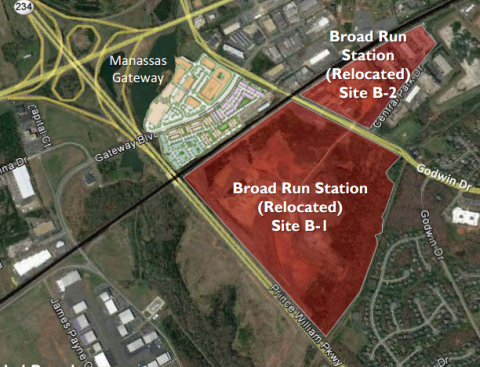
Prince William officials asked for delay. The high costs of building to Haymarket and subsidizing service from that location had created sticker-shock. The Board of County Supervisors declined to endorse the planned 11-mile extension, and was at risk of allowing the project to simply die.
“No action” would block VRE expansion of the Broad Run railyard, and block the addition of new trains. Existing trains, already crowded with commuters, could be expanded by adding extra cars, but more trains are required to handle the increasing demand for transit.
The VRE Operations Board took a straw vote in December, and support for the Relocated Broad Run Terminus option was overwhelming. However, since Prince William County had failed to identify a locally-preferred alternative, the VRE Operations Board took no official action to advance a preferred alternative to a Phase II study.
Earlier in 2016, VRE had submitted the project to expand service on the Manassas Line to the Commonwealth Transportation Board for the SmartScale ranking process. That review is required obtain state funding in 2017 – but VRE withdrew its submission in January 2017.

Since the next cycle for SmartScale ranking will not occur until 2019, the delay means that new state funding for expanding service on the Manassas Line will be postponed for at least two years.
In the 2019 SmartScale process, funding maintenance to keep existing infrastructure in a State of Good Repair will e the #1 priority. For new projects, any expansion on the VRE Manassas Line will be competing against plans to build a new tunnel and widen I-64 at Hampton Roads. That will dramatically reduce congestion, and could rank so high in SmartScale review that it sucks up all the available funding for new construction.
At the January 2017 meeting of the VRE Operations Board, Prince William officials again explained that they had not reached a decision on their preferred alternative.
Representatives from other jurisdictions expressed their frustration at the delay, noting that Prince William’s failure to expand transit capacity would result in more cars clogging the highways of Fairfax County and other jurisdictions. One member commented with tension in his voice “You’re not just holding up yourself, you’re holding up the rest of us too.”
To make matters worse, Prince William officials announced that the planned B-1 site for a relocated Broad Run station was no longer available. The parcel where the rail line crosses Godwin Road has just been purchased by a private company for an economic development project. Site B-2 was still available, but City of Manassas officials were not endorsing it yet.
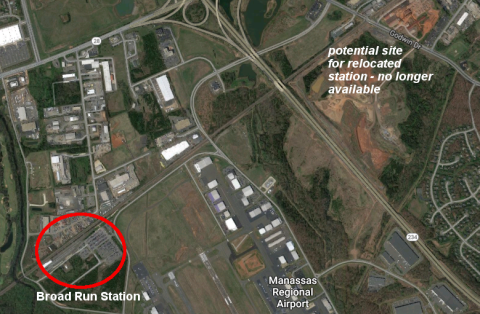
The county representative also suggested that Prince William may not endorse the Relocated Broad Run Terminus alternative, the one with the highest benefit/cost ratio.
Instead, the county may propose building new track west to a new station at Gainesville, even though that choice would not be eligible for Federal funding and operations would require a greater annual subsidy by local taxpayers.
Perhaps not coincidentally, developers have been looking for government-subsidized transportation projects that might stimulate new use at the old Atlantic Research site.The Northern Virginia Transportation Authority (NVTA) could help fund both extension of VRE to Gainesville and construction of the Bi-County Parkway there.
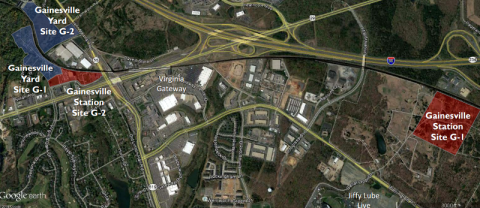
At the end of the January 27, 2017 meeting, the VRE Operations Board members had made clear that Prince William County had to “get its act together,” but county officials had made no commitments regarding when they might adopt a locally preferred alternative.
Letter to PRTC and NVTC On How VRE Should Grow
Teachers in high school civics classes make clear that democracy depends upon people speaking up, and on elected officials responding to the priorities of the citizens.
We get the government that we ask for…
So we spoke up, and shared the perspective of the Prince William Conservation Alliance on how VRE should expand service and focus on more trains, not more track.
The following letter was sent to all the members and alternates on the boards of the Northern Virginia Transportation Commission (NVCT), as well as the Potomac and Rappahannock Transportation Commission (PRTC).

Time to Plant… Native Species
 Lots of plants are pretty. Some pretty plants are a two-fer, and are also healthy for all the other critters that live in Northern Virginia.
Lots of plants are pretty. Some pretty plants are a two-fer, and are also healthy for all the other critters that live in Northern Virginia.
The local animals have not developed a taste for non-native species. (Have you ever seen a caterpillar on a daffodil?)
New arrivals such as garlic mustard, Japanese stilt grass, etc. are close to bug-free. Our local bugs are not able to eat ’em. When the natives get replaced by the aliens, “no insects” means the local birds go hungry.
In contrast, different species of native oak trees provide food for the greatest variety of butterflies and moths. Pretty plants can feed butterflies and birds, but only if we put the right plants in the garden and in the yard.
Looking for natives? Ask your nursery to point out their display of native plants, or come to the Native Plant Sale of the Prince William Wildflower Society on May 7 at Bethel Lutheran Church, 8712 Plantation Lane in Manassas.

 Curious about nature? Enjoy the outdoors? Want to be a part of natural resource management and conservation in Virginia? Then you are a perfect candidate to become a Virginia Master Naturalist.
Curious about nature? Enjoy the outdoors? Want to be a part of natural resource management and conservation in Virginia? Then you are a perfect candidate to become a Virginia Master Naturalist.
Virginia’s environmental agencies initiated this program to build a community of educated, interested conservationists. The Merrimac Farm chapter will start its 2016 basic training program on April 10. Classes and field trips, including some evening sessions and many weekend expeditions to natural areas within the county, finish up in August.
The classes/field trips explore different fields of natural science (botany, geology, insects) with a focus on Northern Virginia’s ecological systems. The foundational knowledge, at the introductory college level, is targeted towards developing a real-world understanding of the local environment and how development is affecting natural systems. Our streams, our forests, our backyards are changing. The Master Naturalist program provides the context, examines what is causing those changes, and gives you the capacity to understand the impacts – good and bad – that we and our children will see over the next decades.
Some time is spent in classrooms; most is spent outdoors seeing up close and personal the plants, the animals, and the interactions that occur. Graduates extend that knowledge to the community through volunteer service. Master Naturalists renew their official certification annually through various projects and at least eight hours of continued training.
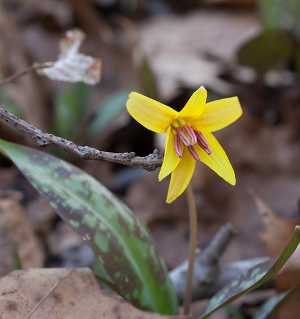 Graduates of earlier Merrimac Farm Master Naturalist Program classes are now having a great time monitoring bluebirds, investigating vernal pools, facilitating camera trapping for the Smithsonian, monitoring stream health, learning more about and speaking up for environmental protection.
Graduates of earlier Merrimac Farm Master Naturalist Program classes are now having a great time monitoring bluebirds, investigating vernal pools, facilitating camera trapping for the Smithsonian, monitoring stream health, learning more about and speaking up for environmental protection.
No previous experience is needed, just a thirst for knowledge of the world around us paired with a commitment to service to maintain, preserve, and protect our environment for future generations.
For more information, including how to apply for the 2016 class, check online at http://merrimacfarmvmn.weebly.com or email merrimacfarmVMN@gmail.com
For more on the statewide Master Naturalist program, see http://www.virginiamasternaturalist.org/
Mow-Cow to the Rescue!
 The 30″ of snow that fell a week ago… well, it’s good that it disappeared slowly.
The 30″ of snow that fell a week ago… well, it’s good that it disappeared slowly.
A quick melt would have sent a quick pulse of runoff that could overload local creeks, delivering a surge sediment and pollution as stormwater raced down to the Potomac River.
A slow melt helped to recharge groundwater supplies, rather than damage surface streams.
But slow snow was a problem. Over 80 members of the Prince William Conservation Alliance had RSVP’d that they were coming to the Winter Party on January 30.
That meant lots of cars looking for a place to park, and a foot of snow was not evaporating, sublimating, or melting away to free up the parking spaces. (In suburban Prince William County, it’s ironic but typical that even conservation meetings require driving to get from hither to yon.)
How to make room for those cars? Shoveling was an option – but a few hours of effort made clear that it would require another few days to clear spaces for the expected crowd.
Hark! What’s that sound? Was it a bugle signalling the arrival of the cavalry?
Why yes, though the sound was really closer to a scrunch-bang-scrunch. It was the leader of the Mow-Cow lawn service team which, in the winter, morphs into Snow-Cow.
The cavalry was the founder/president plowing snow and clearing parking spaces so the party could happen.
Sure, it was his day off. Yes, he’d gotten home from work after 1:00am that morning – but good people do good deeds, even when it’s inconvenient. It’s a “Udderly Dependable” operation.
Merci!
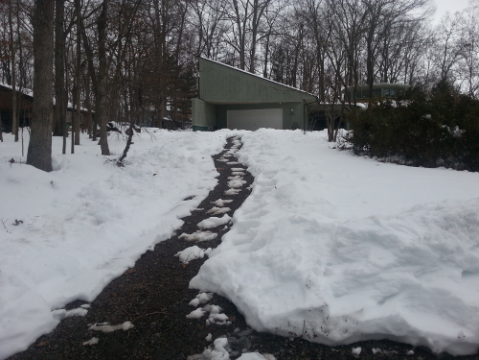
Before the Snow-Cow cavalry arrived
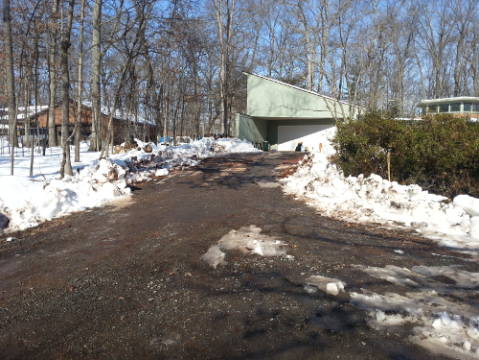
After
Blackburn: A Pre-Thanksgiving Turkey That Ought to Be Terminated With Extreme Prejudice
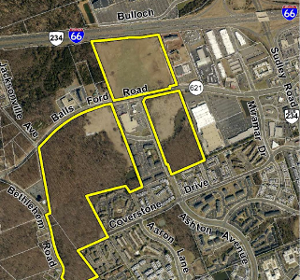 The Board of County Supervisors postponed the original May 12, 2015 date for considering the Blackburn rezoning at the Route 234/I-66 interchange (the interchange with Koons Honda, not the bypass…).
The Board of County Supervisors postponed the original May 12, 2015 date for considering the Blackburn rezoning at the Route 234/I-66 interchange (the interchange with Koons Honda, not the bypass…).
It’s back on the agenda, this time for September 29 November 17 (yeah, stretched out past the election). The supervisors have another opportunity to reject this bad project.
The Planning Department still recommends denial. As noted in the staff report, the Blackburn proposal still has the same problems – massive amount of residential development, minimal offsetting benefits from commercial development. More congestion on local roads, more-crowded school classrooms, higher taxes to subsidize services to residential development – hey, what’s not to like about this turkey?
Prince William needs to attract jobs to Prince William; that’s why Regional Employment Center makes sense at the I-66 interchange. That land has some of the best potential for commercial development that provides local jobs, assuming the county implemented an economic development strategy other than “ugh, can we build more houses?”
A vote in favor of Blackburn would be a vote in favor of a windfall profit for the landowner selling the parcel. A vote in favor of Blackburn would stick it to local taxpayers, giving them indigestion in the wallet, in the classroom, and in the car for many generations to come. Sure, the next election is 4 years from now – but why would any elected supervisor think residential-heavy development was suitable for that location?
Like Higher Taxes and Long Commutes? Then You’ll Like Rezoning Blackburn on May 12…
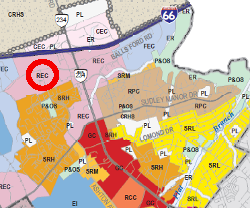 There’s a direct link between economic development, traffic congestion, property taxes, and land conservation.
There’s a direct link between economic development, traffic congestion, property taxes, and land conservation.
If we zone parcels for offices, recruit businesses to those locations, then Prince William residents can get to jobs without commuting through traffic jams in Fairfax County. 50% of Prince William’s workers drive to jobs outside the county, and 100% of commuters grumble about traffic.
New jobs reduce the residential property tax burden too. In job-rich Arlington County, residents pay only 50% of the property taxes. In Prince William County, residents pay over 80% of property taxes because so little commercial development has occurred here.
So you’d think the Prince William supervisors would be focused on getting commercial development at the I-66/Route 234 interchange. It’s the closest one to Fairfax County, and the place with the highest potential to create a reverse commute. That’s why the area is planned as Regional Employment Center (REC).
So why are the county supervisors planning to rezone the Blackburn property there to build 415 houses and require almost no commercial development? That rezoning would sacrifice a great opportunity to create local jobs and local tax revenue.
The idea of building houses there – well, it stinks. If you want to reduce the burden of taxes on homeowners, if you want to generate more revenue to fund schools and other service, if you want to minimize the commuting nightmare by creating local jobs – you would not use one of the most attractive parcels for economic development at the I-66 interchange for residential development.
Conservation is the wise use of natural resources. Rezoning Blackburn for residential use would qualify as a waste, not as a wise use of land.
The Rural Crescent Review – Keep Your Eye on the Process
Reconstituting the County’s Agricultural and Forestral District Advisory Committee is the talk of the town in the Brentsville District and east Prince William residents should be interested too. The Prince William Board of County Supervisors (BOCS) is set to unveil a slate of nominees that would revive this currently dormant committee, withith little or no debate.
Right now the committee’s sole purpose is to determine whether a property should enter or leave Prince William County Agricultural and Forestral District. The County Agricultural and Forestral Disrict covers 2,200 acres or 0.01% of the County. Properties included within the district are given special tax breaks as an incentive for agricultural production.
This all sounds pretty hohum, but don’t fall asleep yet: the current discussion focuses on expanding the role of this committee to advise the Board of County Supervisors on an un-named new set of issues. Continue reading
Good Natured Book Group Update
Prince William Conservation Alliance Book Club had its initial outing on Sunday, October 6 at the Alliance office in Tacket’s Mill. A small number of readers reviewed Richard Preston’s New York times bestseller The Wild Trees, a thoughtful story of several people brought together in their discovery and awe of Coast Redwood trees. These giants can have trunks that are 30 feet wide, and rise more than 35 stories into the sky.
Preston deftly describes, “… their mysterious canopies, rich with hanging gardens, blackened chambers hollowed by fire, and vast, aerial trunk systems fused into bridges and towers”. Overlaying these eloquent descriptions are the stories of Steve Sillet, Marie Antoine and the botanists who discover a lost world above California. A highly recommended book
Our next meeting will December 6, 3:00pm at PWCA’s office in Tackett’s Mill. We will review The Forest Unseen by David George Haskell.
Haskell, who recently spoke at the Arlington Public Library about this book and his discoveries, writes of a yearlong study of a square meter of land in an old growth mountain forest in East Tennessee. It is a series of short chapters describing all that he saw there. The book can be obtained through the Conservation Alliance Amazon portal on our website.
Please join us and share your thoughts on this beautiful book. Save the date and, in the meantime, get The Forest Unseen and become entranced.
City May Win the Right to Keep Lake Manassas Closed – But Is That Good Public Policy?
 In July 2012, a Prince William Circuit Court judge dismissed the lawsuit filed by the developer of a community of the shores of Lake Manassas (Case CL04077794-00). The judge’s decision, if upheld on appeal, allows the city to continue to block recreational access to the lake.
In July 2012, a Prince William Circuit Court judge dismissed the lawsuit filed by the developer of a community of the shores of Lake Manassas (Case CL04077794-00). The judge’s decision, if upheld on appeal, allows the city to continue to block recreational access to the lake.
Lake Manassas is owned by a public body, the City of Manassas. The Commonwealth of Virginia granted the city authority to destroy a portion of Broad Run in order to create the reservoir.
For years, the city authorized a marina to operate on Lake Manassas, but now City Council has blocked any public use. No fishing, no boating, no waterfowl hunting, no nuttin’ allowed, except by special permission from the city to access the lake.
The city owns a recreational jewel, and it is keeping it locked away where no one can see it.
For more, see Lake Manassas – Will the City Council invest in public access or a lawsuit? and other posts about Lake Manassas.
 Comments (1)
Comments (1)